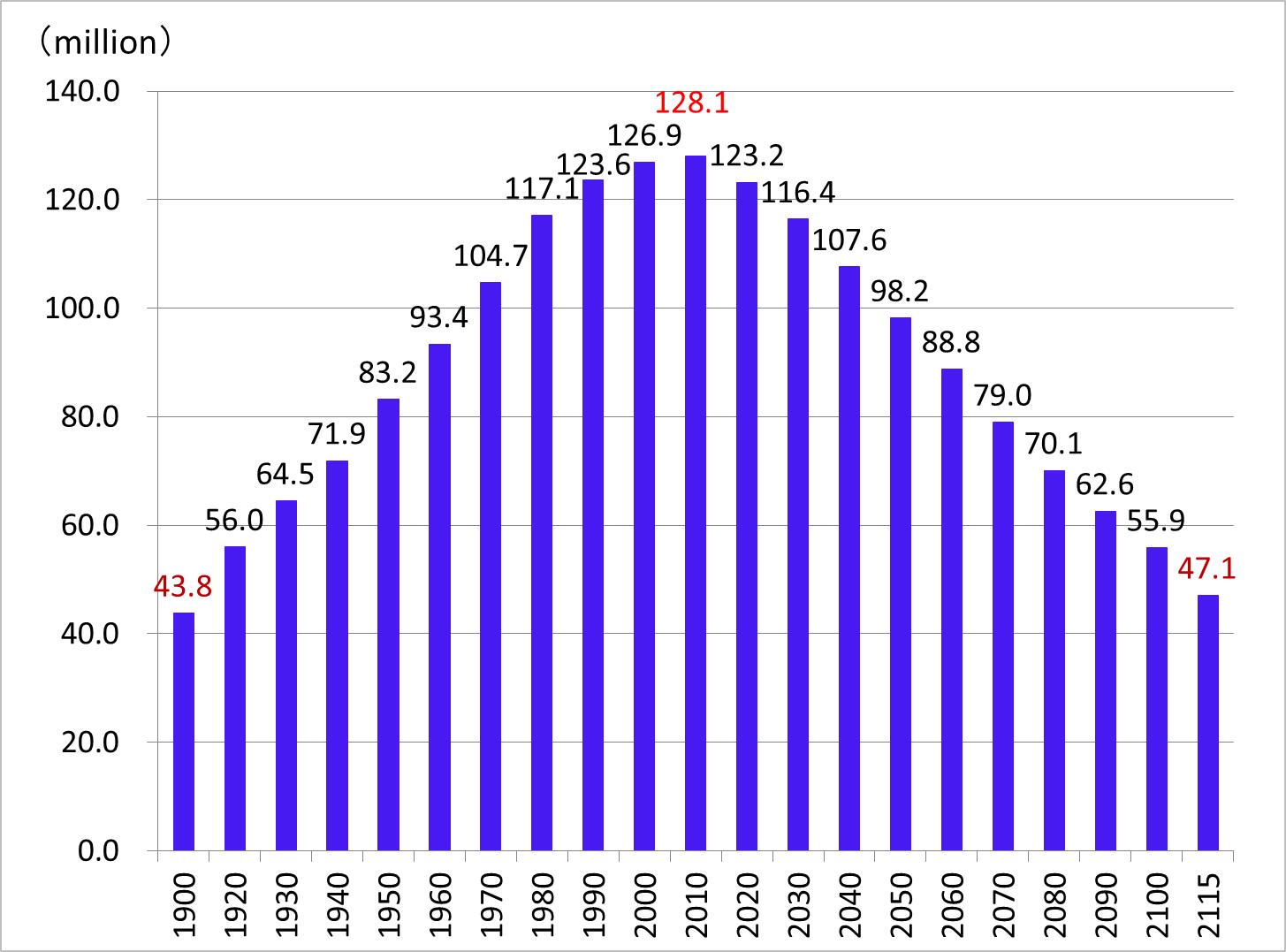Column Finance and the Social Security System 2018.03.08
【Aging, safety net and fiscal crisis in Japan】No.56: Japan's Population Will Decrease to One Third in 100 Years
According to the population estimates released by the National Institute of Population and Social Security Research in April 2017, Japan's population, which was 128.1 million in 2010, will decrease to 47.1 million by 2115. Therefore, the estimated population in 2115 will be the same as in 1900. The difference in the population structure between 1900 and 2115 is the proportion of the elderly over the age of 65.
The average life expectancy in 1900 was estimated to be 44 years. Therefore, the proportion of elderly people over the age of 65 was considered to be close to zero. On the other hand, the elderly population in 2115 is estimated to be 18.2 million (38.6%) out of a total population of 47.1 million. This is almost certainly the future truth. However, we do not need to be overly pessimistic. A society where people can live happily can exist if innovation, such as artificial intelligence and robots, is introduced in people's living infrastructure, such as national defense, food production, education, medical care, etc.

(Source)National Institute of Population and Social Security Research
